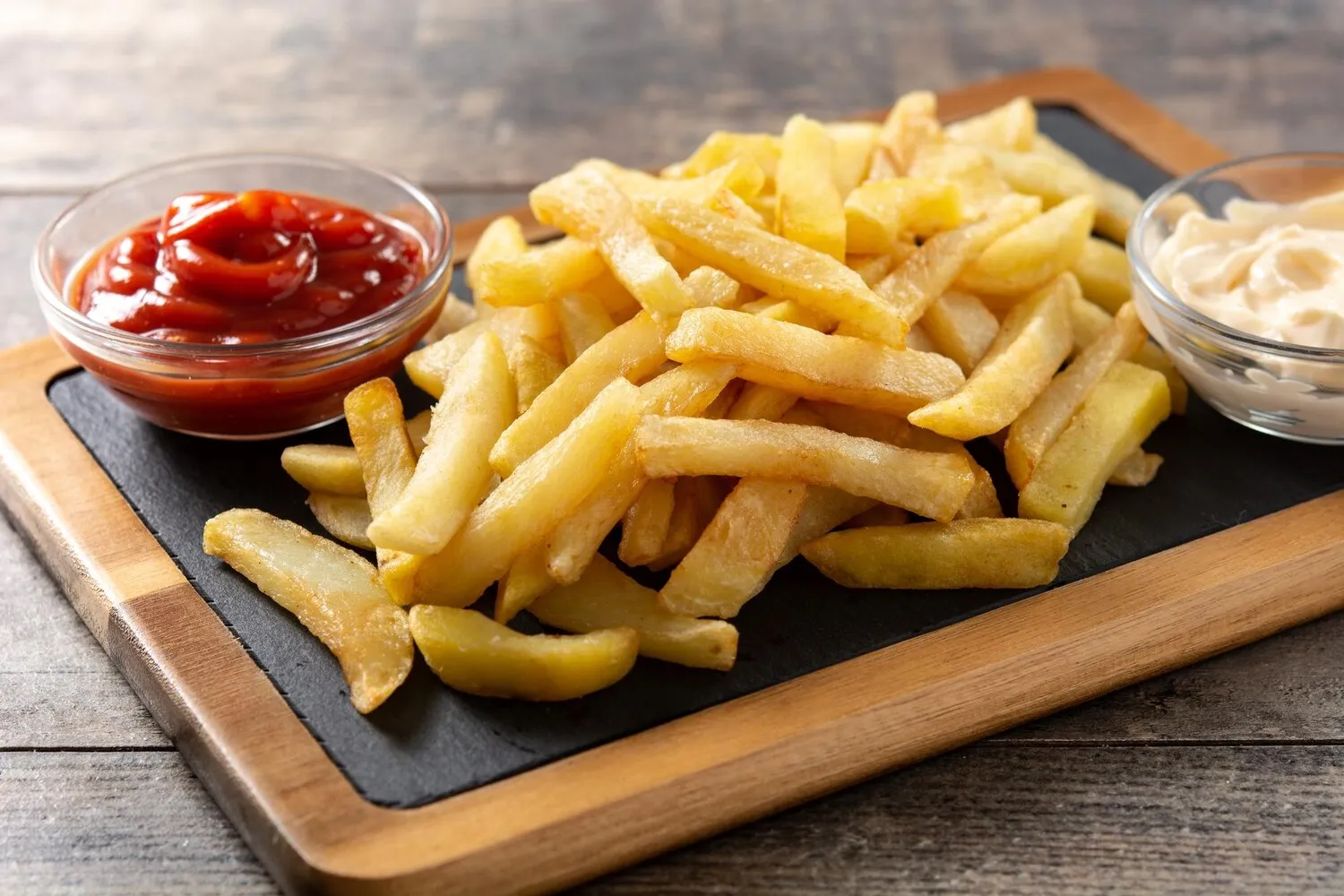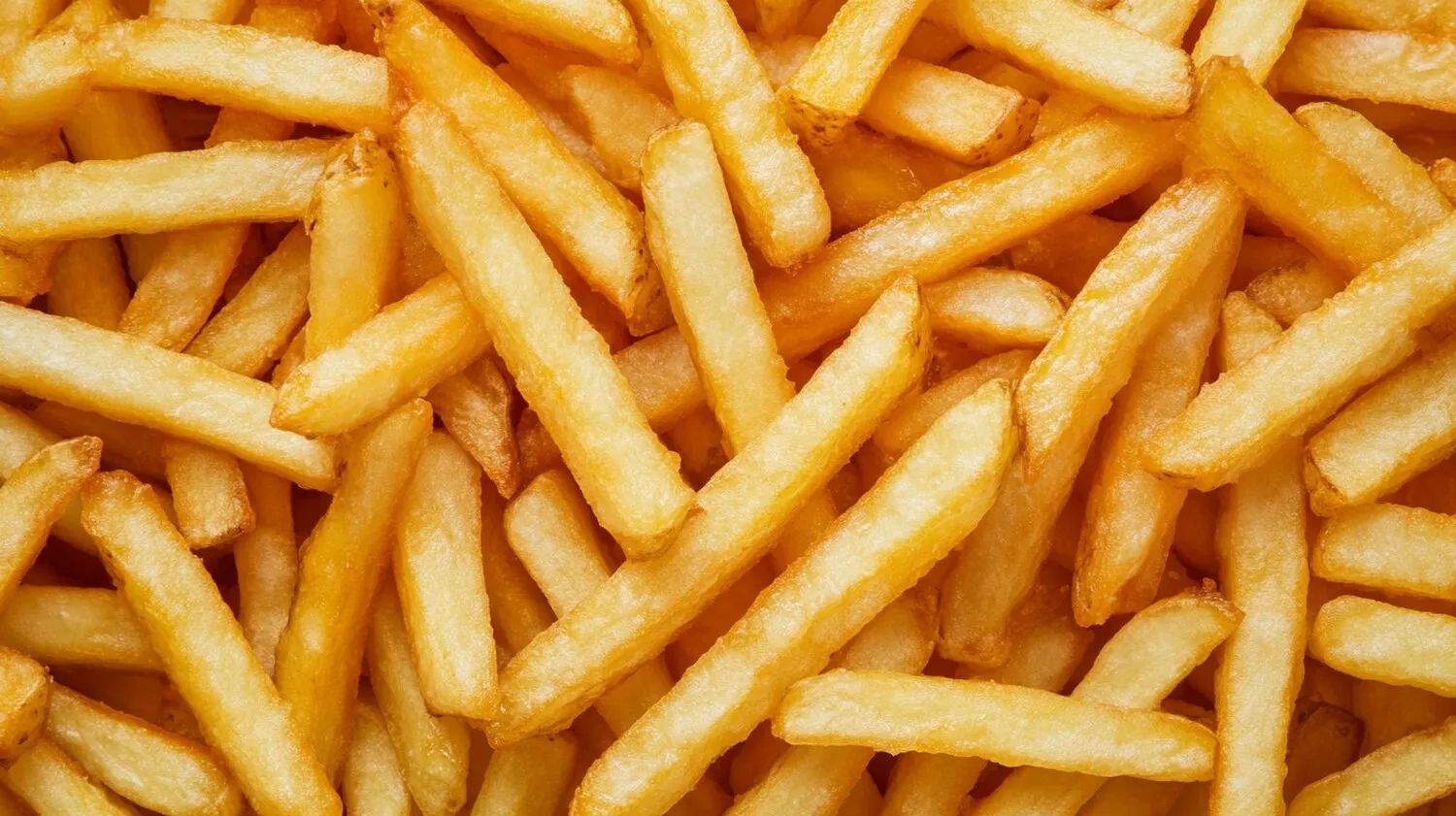
Fries
Classic fries to accompany the burgers, often mentioned in reviews as a popular side.
Nutrition Facts
* The % Daily Value (DV) tells you how much a nutrient in a serving of food contributes to a daily diet. 2,000 calories a day is used for general nutrition advice.
Brooks Hamburgueria
While often associated with the United States, fries are believed to have originated in Belgium. During World War I, American soldiers stationed in the French-speaking part of Belgium were introduced to fries and mistakenly called them 'French' fries, due to the language spoken.
Fries have become a ubiquitous and beloved side dish worldwide, particularly in fast-food restaurants and as an accompaniment to burgers. They represent a comforting and convenient food choice.
Fast Food Staple
Fries are a cornerstone of fast-food culture, often consumed alongside burgers, hot dogs, and other quick-service meals. They're seen as an accessible and affordable treat.
Global Adaptation
Fries have been adapted to various cuisines and cultures, with different seasonings, sauces, and toppings reflecting local tastes. Examples include poutine in Canada, carne asada fries in the southwestern United States, and seasoned fries in various regions.
Movie Theater Snack
In some countries, fries are a popular snack to eat at movie theaters.
The primary flavors of classic fries are savory, starchy, and slightly salty. The texture plays a crucial role, ideally being crispy on the outside and soft and fluffy on the inside.
The main flavor comes from the potatoes themselves, usually russet or other starchy varieties. The cooking oil (often vegetable or peanut oil) contributes a subtle background flavor. Salt is essential for enhancing the potato's natural taste. Variations include adding spices like paprika, garlic powder, or herbs like rosemary.
Potato Selection
Use starchy potatoes like russets for the best results. These varieties have a lower moisture content, which leads to crispier fries.
Double Frying
The key to achieving optimal crispness is double frying. The first fry at a lower temperature (around 300°F/150°C) cooks the potatoes through. The second fry at a higher temperature (around 375°F/190°C) creates the crispy exterior.
Oil Temperature
Maintain a consistent oil temperature during frying. Use a thermometer to monitor the temperature and adjust the heat as needed. Overcrowding the fryer will lower the oil temperature and result in soggy fries.
Soaking the potatoes
Soaking the cut potatoes in cold water for at least 30 minutes (or up to a few hours) helps remove excess starch, leading to crispier fries. Be sure to thoroughly dry the potatoes before frying.
Explore additional Side Dish dishes and restaurants
Explore Side DishDiscover top dining spots and culinary experiences in Rio Claro.
Explore Rio ClaroLearn more about the food culture, restaurant scene, and culinary heritage of Brazil.
Explore Brazil
